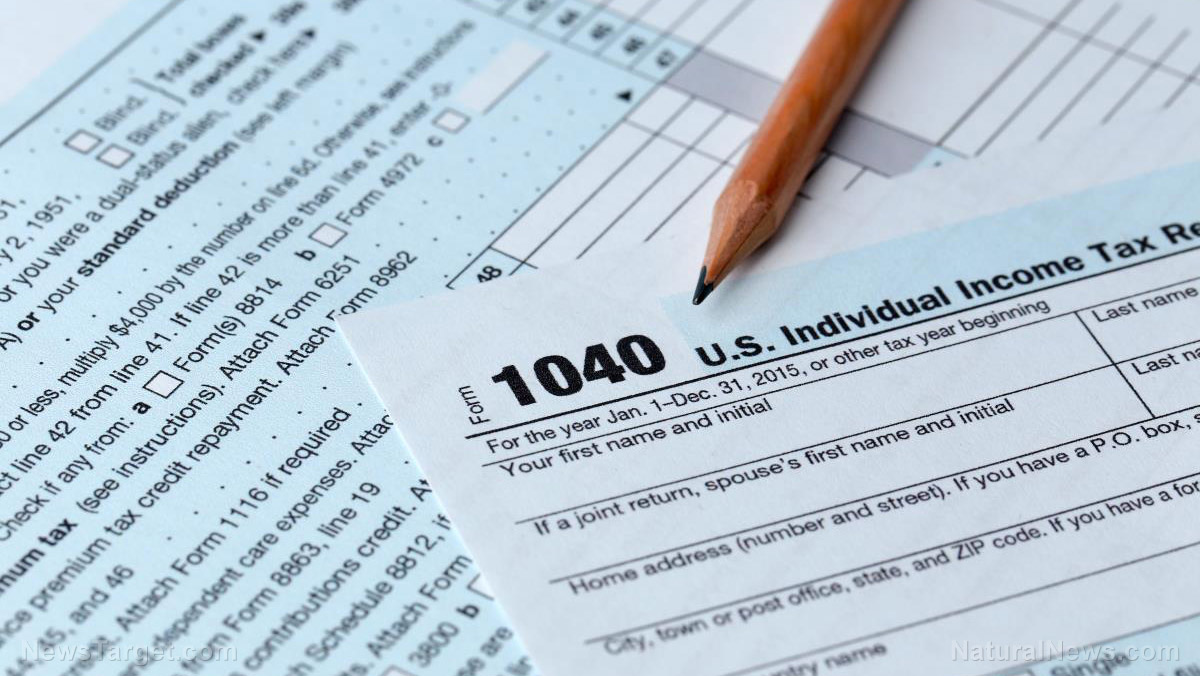Walmart’s 8% profit loss sparks MARKET PANIC, as concerns grow over tariffs and trade wars
02/21/2025 / By Lance D Johnson

Walmart, the nation’s largest retailer and grocer, delivered grim earnings forecast for 2024, sending its stock plummeting nearly 8% in premarket trading—its steepest drop in over a year. While the retail giant exceeded fourth-quarter expectations with a 20% surge in e-commerce sales and $180.6 billion in total revenue, its first-quarter and full-year profit guidance fell far short of analysts’ estimates. The company cited ongoing pressure from its product mix, inflation, and an uncertain economic environment, raising alarms about the resilience of consumer spending and the broader retail sector.
The announcement comes as Walmart, long hailed as a bastion of affordability in a multi-year inflation storm, faces mounting challenges from rising costs, potential tariffs, and a fragile consumer base. Despite its pricing power and ability to attract wealthier shoppers, the retail giant’s warning highlights the precarious state of the U.S. economy and the growing risks for businesses navigating an increasingly volatile landscape.
Key takeaways from Walmart’s earnings report
• Fourth-Quarter Wins: Walmart exceeded expectations in the fourth quarter of 2024, with 180.6 billion in revenue, 7.9 billion in operating income, and a 20% jump in e-commerce sales.
• Dismal Forecast: Despite exceeding expectations in the fourth quarter, full-year adjusted earnings per share (EPS) are projected at 2.50 to 2.60, below the 2.77 consensus estimate. First?quarter EPS is expected at 2.77 missing the 0.65 forecast.
• Market Reaction: Shares plunged nearly 8% in premarket trading, threatening to erase a 77% rally over the past year.
• Tariff Concerns: Walmart’s CFO, John David Rainey, warned that the guidance does not account for potential tariffs from President Trump’s escalating trade war. The cost of tariffs could ultimately be passed on to consumers, as cheap Chinese goods became more expensive at places like WalMart.
The inflation storm and Walmart’s pricing power
Walmart has long been a lifeline for budget-conscious consumers, offering low prices amid a relentless inflation storm that has squeezed household budgets for years. The retailer’s ability to maintain its pricing power has allowed it to outperform competitors, even as wealthier consumers increasingly turn to its stores for value.
However, the company’s latest earnings guidance reveals cracks in its armor. While Walmart’s e-commerce growth and holiday sales were strong, its product mix—weighted heavily toward lower-margin groceries—has put pressure on profitability. CEO Doug McMillon acknowledged the challenges in a statement, saying, “We have momentum driven by our low prices, a growing assortment, and an e-commerce business driven by faster delivery times. We’re gaining market share, our top line is healthy, and we’re in great shape with inventory.”
Yet, the question remains: Can Walmart continue to offer the best prices if tariffs on Chinese imports and Mexican food products drive costs higher? Rainey hinted at the company’s strategy, telling Bloomberg, “We’ll work with suppliers. We’ll lean into our private brands to keep prices low.”
The looming threat of tariffs and trade wars
Walmart’s reliance on imported goods makes it particularly vulnerable to the escalating trade tensions under President Trump’s administration. The company imports a significant portion of its merchandise from China and food products from Mexico, leaving it exposed to potential tariff hikes.
Rainey’s admission that the current guidance does not include the impact of tariffs has spooked investors, who fear that rising costs could force Walmart to pass expenses onto consumers. This would undermine its reputation as the go-to destination for affordable goods and could erode its competitive edge.
The uncertainty surrounding trade policy adds another layer of complexity to an already fragile economic environment. As Rainey noted, “I would describe the consumer as steady,” but spending is far from a complete rebound. This cautious outlook reflects the broader challenges facing retailers as they navigate a landscape marked by inflation, shifting consumer behavior, and geopolitical risks.
Walmart’s earnings warning is more than just a corporate misstep—it’s a harbinger of deeper economic troubles. The retail giant’s struggles highlight the fragility of consumer spending, which has been propped up by debt and dwindling savings. With inflation still elevated and interest rates remaining high, households are increasingly forced to make tough choices about where to allocate their dollars.
The company’s reliance on low-margin groceries further underscores the precarious state of the retail sector. As consumers prioritize essentials over discretionary spending, retailers like Walmart face mounting pressure to maintain profitability while keeping prices low.
Sources include:
Submit a correction >>
Tagged Under:
Chinese goods, consumer behavior, dwindling savings, economy, escalating trade wars, Inflation, interest rates, market crash, market share, profit loss, profitability, Retail, rising costs, supply chain, tariffs, trade wars, Walmart
This article may contain statements that reflect the opinion of the author
Get independent news alerts on natural cures, food lab tests, cannabis medicine, science, robotics, drones, privacy and more from NewsTarget.com
Get independent news alerts on natural cures, food lab tests, cannabis medicine, science, robotics, drones, privacy and more from NewsTarget.com
RECENT NEWS & ARTICLES
COPYRIGHT © 2017 DEBT COLLAPSE NEWS




















